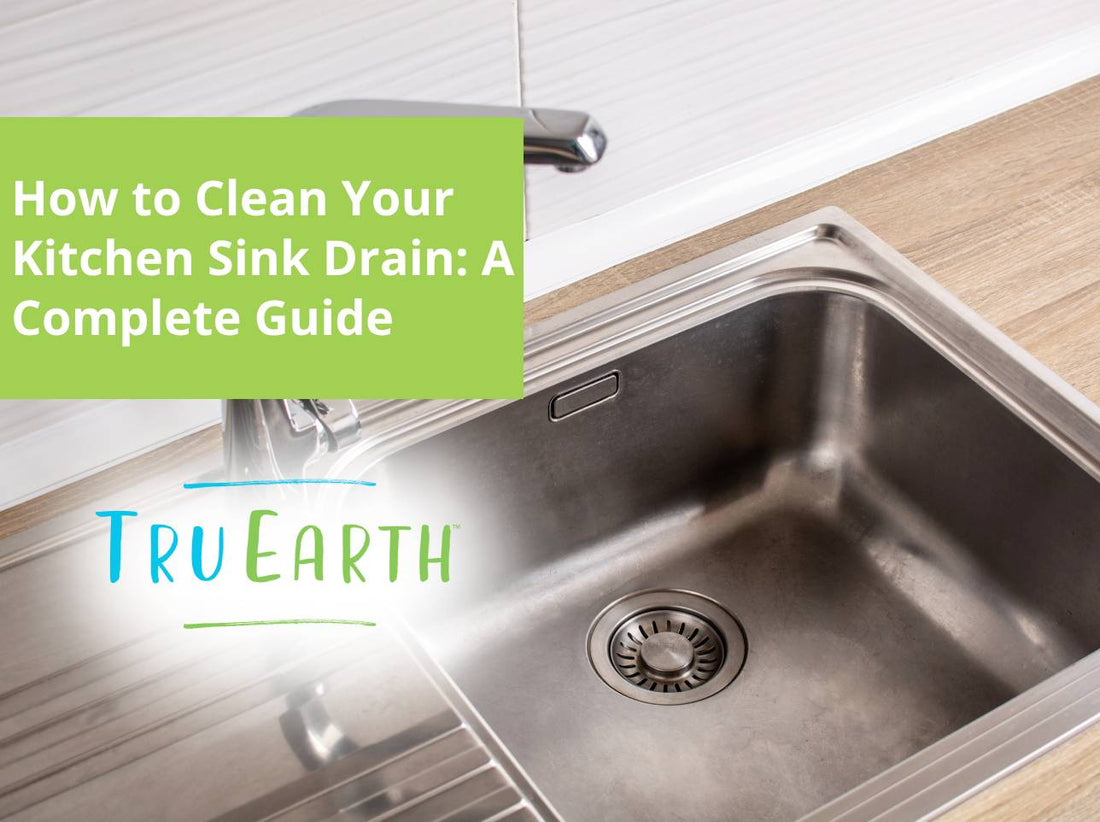Een schone en goed onderhouden gootsteenafvoer is essentieel voor een hygiënische en efficiënte keuken. Na verloop van tijd kunnen gootsteenafvoeren verstopt raken met etensresten, vet, zeepresten en ander vuil, wat leidt tot onaangename geurtjes en een trage afvoer.
Met de juiste hulpmiddelen en technieken kan het schoonmaken van de afvoer van uw keukengootsteen een eenvoudig en effectief proces zijn. In deze blogpost geven we u een stapsgewijze handleiding voor het grondig reinigen van de afvoer van uw keukengootsteen, zodat deze fris en vrij blijft stromen.

Waarom raakt uw gootsteen verstopt?
Verstoppingen in de gootsteen kunnen om verschillende redenen ontstaan, waardoor de waterstroom verstoord raakt. Een veelvoorkomende oorzaak is de ophoping van etensresten, vet en ander vuil dat na verloop van tijd door de gootsteen spoelt. Deze stoffen kunnen zich ophopen en verstoppingen in de leidingen veroorzaken, wat kan leiden tot een trage afvoer of zelfs een complete verstopping.
Daarnaast kunnen zeepresten, minerale afzettingen en haar ook bijdragen aan verstoppingen, met name in wastafels. Een andere factor die verstoppingen in de gootsteen kan veroorzaken, is het verkeerd weggooien van bijvoorbeeld koffiedik, eierschalen of vaste stoffen. Deze horen in de prullenbak thuis in plaats van in de afvoer. Inzicht in de oorzaken van verstoppingen in de gootsteen kan u helpen preventieve maatregelen te nemen en de doorstroming in uw gootsteen te behouden.
Verzamel de benodigde benodigdheden
Voordat je begint met het schoonmaken van de afvoer van je keukengootsteen, is het essentieel om alle benodigde materialen te verzamelen. Dit heb je nodig:
- Rubberen handschoenen: Rubberen handschoenen beschermen uw handen tegen direct contact met vuil of chemicaliën.
- Zuiveringszout: Zuiveringszout is een natuurlijk schoonmaakmiddel dat helpt vet af te breken en de afvoer te ontgeuren.
- Witte azijn: Witte azijn is uitstekend geschikt om minerale afzettingen te verwijderen en de afvoer te ontsmetten.
- Kokend water: Kokend water helpt om vuil en resten uit de afvoer te spoelen.
- Ontstopper: Een ontstopper kan handig zijn om hardnekkige verstoppingen te verhelpen.
- Pijpborstel of flexibele reinigingsborstel: Een pijpborstel of flexibele reinigingsborstel is handig om de binnenkant van de afvoerbuis te schrobben.
- Emmer of kom: Een emmer of kom vangt overtollig water en vuil op.
Verwijder vuil uit de afvoer
Begin met het verwijderen van zichtbaar vuil of etensresten uit de afvoer van de gootsteen. Je kunt je handen of een pincet gebruiken om grotere stukken vuil eruit te halen. Zorg ervoor dat je het verzamelde vuil in een vuilniszak gooit.
Ontstop de afvoer
Als de afvoer van uw keukengootsteen verstopt is en langzaam leegloopt, probeer dan een zuiger te gebruiken om deze te ontstoppen. Vul eerst de gootsteen gedeeltelijk met water, zodat de afvoer bedekt is. Plaats de zuiger op de afvoer en pomp hem meerdere keren op en neer. De zuigkracht van de zuiger kan de verstopping losmaken en de afvoer weer goed laten lopen.
Schoonmaken met baking soda en azijn
Nadat u het zichtbare vuil hebt verwijderd en de afvoer hebt ontstopt, is het tijd voor een grondige reiniging met zuiveringszout en azijn:
Stap 1 - Zuiveringszout
Begin met het gieten van ongeveer een half kopje baking soda in de afvoer. Baking soda is een natuurlijk reinigingsmiddel dat vet kan afbreken en geurtjes kan neutraliseren.
Stap 2 - Azijn
Voeg na het toevoegen van de baking soda een kopje witte azijn toe. De combinatie van baking soda en azijn zorgt voor een bruisende reactie die helpt om vuil en minerale afzettingen los te maken.
Stap 3 - Laat het zitten
Laat het mengsel van baking soda en azijn ongeveer 15-30 minuten in de afvoer zitten. Gedurende deze tijd zal de chemische reactie zijn werk doen en het vuil en de rommel afbreken.
Stap 4 - Kokend water
Nadat het mengsel heeft ingewerkt, spoel je de afvoer door met kokend water. Het hete water spoelt alle achtergebleven vuil weg en zorgt ervoor dat de afvoer schoon en helder blijft.
Schrob de afvoerbuis
Voor een grondigere reiniging kunt u een pijpborstel of flexibele reinigingsborstel gebruiken om de binnenkant van de afvoerbuis te schrobben. Dompel de borstel in een mengsel van heet water en afwasmiddel en schrob de wanden van de buis om hardnekkige resten te verwijderen.
Voorkom toekomstige opbouw
Om toekomstige ophopingen te voorkomen en de afvoer van uw gootsteen in de keuken schoon en fris te houden, kunt u de volgende preventieve maatregelen overwegen:
- Gebruik een gootsteenzeefje: plaats een gootsteenzeefje over de afvoer om etensresten en etensresten op te vangen voordat ze in de afvoer verdwijnen.
- Giet geen vet door de afvoer: Giet geen vet of bakolie door de afvoer. Deze kunnen stollen en verstoppingen veroorzaken.
- Laat na gebruik heet water lopen: Laat na gebruik van de gootsteen enkele seconden heet water lopen om eventuele resten weg te spoelen.
- Regelmatig onderhoud: Voer regelmatig onderhoud uit door de afvoer minimaal één keer per maand schoon te maken met zuiveringszout en azijn.

Zorgen voor een schone en schone keukenafvoer
Het schoonmaken van de afvoer van uw keukengootsteen is een essentiële taak voor een schone en hygiënische keuken. Door de stapsgewijze handleiding te volgen en natuurlijke reinigingsmiddelen zoals baking soda en azijn te gebruiken, kunt u gemakkelijk vuil verwijderen, geurtjes elimineren en de afvoer van uw keukengootsteen herstellen.
Met regelmatig onderhoud en preventieve maatregelen kunt u ervoor zorgen dat de afvoer van uw keukengootsteen vrij doorloopt en geurvrij blijft, voor een frisse en uitnodigende keukenomgeving. Dus stroop uw mouwen op, verzamel uw schoonmaakspullen en pak die afvoer van uw keukengootsteen vol vertrouwen aan!


